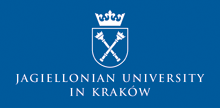Speaker
Description
Electric Dipole Moment (EDM) searches of charged particles in storage rings is a novel approach to look for additional microscopic time-reversal (T), parity (P) and charge-parity (CP) violation, the latter being required to help explaining the apparent matter-antimatter asymmetry in the Universe.
Up to now EDM experiments mainly focused on neutral particles. The idea to exploit charged particles to search for EDM is relatively new, although there have been results for muons from the (g-2) measurements at Brookhaven. EDMs of charged particles such as protons or deuterons can be searched for in storage rings by measuring the influence of electric fields on the polarization vector, which is oriented parallel to the EDM. Assuming technically realistic values for the electric field strength, the number of particles and the polarization lifetime, a statistical error of 10-29 e cm per year of running can be obtained. The challenge is to identify and reduce all systematic uncertainties. This precision can be reached if the precession in the accelerator plane due to the magnetic moment is suppressed (frozen spin method), which can be achieved by an appropriate combination of electric and magnetic fields and momentum. For particles with positive magnetic anomaly (e.g. protons), only electric fields are needed at a proton momentum of 0.7007 GeV/c. Using only electric fields allows for a simultaneous storage of clockwise and counterclockwise circulating beams, which will be the most important tool to mitigate systematic effects. This will be an important advantage compared to other EDM experiments, where one either has to take different consecutive runs with reversed fields (e.g. neutron EDM) or the particles are spatially separated (e.g. Hg-EDM).
The JEDI (Jülich Electric Dipole Investigations) collaboration focuses the establishment of key-technologies and on first exploratory measurements, using the pure magnetic Cooler Synchrotron COSY at Forschungszentrum Jülich (Germany). With its ability to store and cool polarized proton and deuteron beams in the appropriate energy range, COSY is the only facility worldwide where such investigations can be conducted. In 2017, the CPEDM (charged particle EDM) collaboration, mainly comprising scientist from CERN and the JEDI collaboration was established, in order to investigate the possibility to design and construct a 500 m circumference storage ring for EDM measurements at CERN. After intense discussions within CPEDM as well as with accelerator experts worldwide, it has become clear that the goal of 10-29 e cm cannot be achieved in one giant leap; instead, a prototype ring must be devised as an inevitable intermediate step. It will serve to answer fundamental questions, to demonstrate key technologies and it can be used to perform a direct EDM measurement competitive to the current neutron EDM sensitivity.
The talk will be about the status of the CPEDM project, including an outlook towards oscillating EDMs due to axion-like particles, a candidate for Dark Matter, which can also be search for in storage rings.

